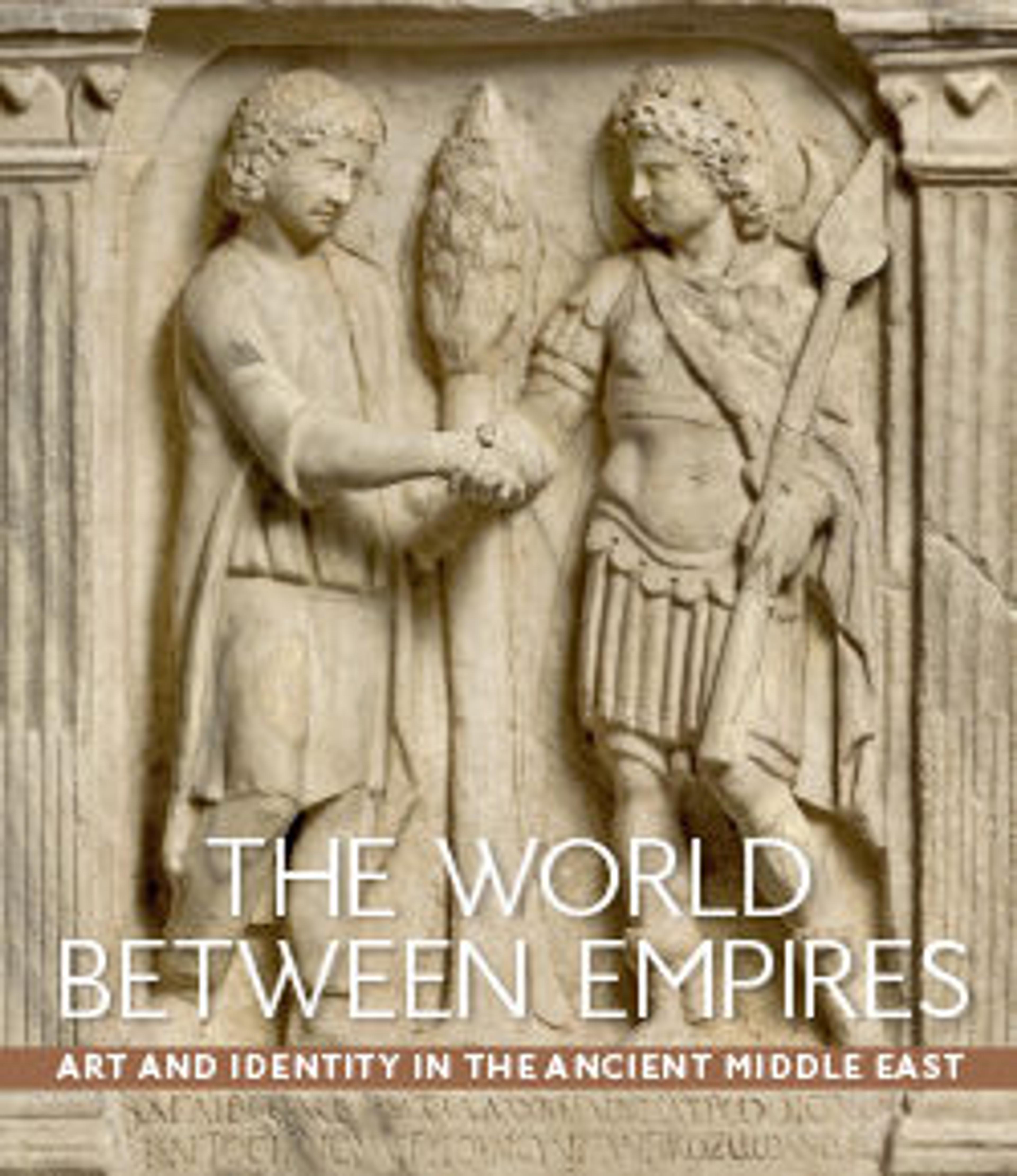Drachm
Numismatists – the scholars who study coins – refer to the ‘front’ side of the coin, which usually features the head of a person or god, as the ‘obverse,’ and the ‘back’ side as the ‘reverse.’
On the obverse of this silver coin, a bust of the king faces to the left. He has a beard and wavy hair, and wears a diadem (the headband worn by victorious athletes in ancient Greece). He also wears a torque or necklace around his neck. A star is in front of his forehead, and a crescent is at the back of his head. A border of dots surrounds the image.
The reverse shows a seated man facing right. He wears sleeves and trousers under a cloak, as well as a diadem and boots with laces. In his hand he holds a bow with the bowstring upwards. He sits on a high-backed throne. In front of him is a monogram, perhaps containing the Greek letter Σ. A Greek inscription surround the man. The coin is struck off center, so part of the inscription is missing, but we know from other examples that it reads "of the king of kings Arsaces the generous, just, renowned and Greek-loving."
This coin was struck by the Parthian king Orodes II (reigned ca. 57–38 B.C.). The king on the obverse is probably meant to be Orodes himself, wearing a diadem as a symbol of victory. The identity of the figure on the reverse is unknown; perhaps it is an idealized Parthian king, depicted as an archer. The figure of the archer is quite stylized, in contrast to earlier Parthian coins where it is more closely modeled on the image of Apollo that appears on early Seleucid coins. The head of Orodes on the obverse also exhibits some stylization, such as in the schematic rendering of the hair and beard.
The inscription on this coin, like those on almost all Parthian coins, names the first ruler of the empire Arsaces I (reigned ca. 247–217 B.C.), rather than the current ruler Orodes. It may be a reference to the dynasty founded by Arsaces, or perhaps the seated archer is meant to represent him. It is also possible that all Parthian kings were called ‘Arsaces’ as a title or throne name.
On the obverse of this silver coin, a bust of the king faces to the left. He has a beard and wavy hair, and wears a diadem (the headband worn by victorious athletes in ancient Greece). He also wears a torque or necklace around his neck. A star is in front of his forehead, and a crescent is at the back of his head. A border of dots surrounds the image.
The reverse shows a seated man facing right. He wears sleeves and trousers under a cloak, as well as a diadem and boots with laces. In his hand he holds a bow with the bowstring upwards. He sits on a high-backed throne. In front of him is a monogram, perhaps containing the Greek letter Σ. A Greek inscription surround the man. The coin is struck off center, so part of the inscription is missing, but we know from other examples that it reads "of the king of kings Arsaces the generous, just, renowned and Greek-loving."
This coin was struck by the Parthian king Orodes II (reigned ca. 57–38 B.C.). The king on the obverse is probably meant to be Orodes himself, wearing a diadem as a symbol of victory. The identity of the figure on the reverse is unknown; perhaps it is an idealized Parthian king, depicted as an archer. The figure of the archer is quite stylized, in contrast to earlier Parthian coins where it is more closely modeled on the image of Apollo that appears on early Seleucid coins. The head of Orodes on the obverse also exhibits some stylization, such as in the schematic rendering of the hair and beard.
The inscription on this coin, like those on almost all Parthian coins, names the first ruler of the empire Arsaces I (reigned ca. 247–217 B.C.), rather than the current ruler Orodes. It may be a reference to the dynasty founded by Arsaces, or perhaps the seated archer is meant to represent him. It is also possible that all Parthian kings were called ‘Arsaces’ as a title or throne name.
Artwork Details
- Title: Drachm
- Period: Parthian
- Date: ca. 57–38 BCE
- Geography: Iran
- Culture: Parthian
- Medium: Silver
- Dimensions: Thickness 0.23 cm, Diameter 2 cm
- Credit Line: Bequest of Joseph H. Durkee, 1898
- Object Number: 99.35.2956
- Curatorial Department: Ancient West Asian Art
More Artwork
Research Resources
The Met provides unparalleled resources for research and welcomes an international community of students and scholars. The Met's Open Access API is where creators and researchers can connect to the The Met collection. Open Access data and public domain images are available for unrestricted commercial and noncommercial use without permission or fee.
To request images under copyright and other restrictions, please use this Image Request form.
Feedback
We continue to research and examine historical and cultural context for objects in The Met collection. If you have comments or questions about this object record, please contact us using the form below. The Museum looks forward to receiving your comments.
